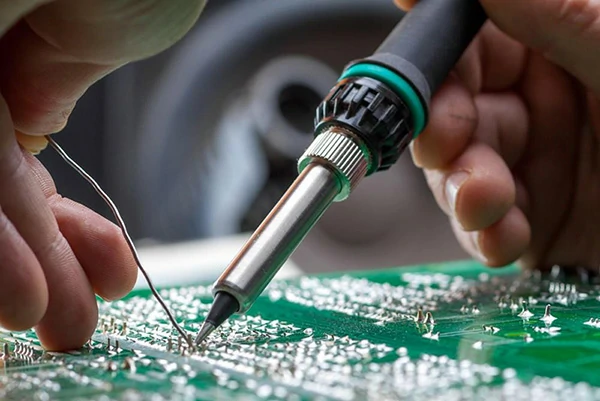
In the last article A Comprehensive Guide for Beginners, we have learned the Introduction of SMD soldering, Understanding SMD Components and the essential tools and equipment. Here, we will walk you through the setup of your SMD soldering station and the various soldering techniques.

SMD soldering requires precision and attention to detail. The setup of your soldering station plays a critical role in achieving reliable and successful soldering results.
Accurate temperature control is crucial in SMD soldering. Different SMD components and circuit board materials require specific temperature settings for optimal soldering. A soldering station with adjustable temperature settings allows you to tailor the temperature to your specific soldering needs.
Calibration of your soldering station is equally important to ensure that it consistently maintains the correct temperature readings. Regular calibration ensures that your soldering station performs optimally, preventing potential soldering defects.

Electrostatic discharge (ESD) poses a significant risk to sensitive electronic components, including SMDs. Proper ESD safety measures are essential to prevent damage during soldering. An ESD mat and wrist strap create a static-free work environment, protecting both you and the electronic components.
Handling SMD components with ESD-safe tweezers and storing them in ESD-safe packaging further minimizes the risk of ESD-related damage.
Mastering various SMD soldering techniques is the key to achieving clean and reliable solder joints.
Thoroughly clean and inspect the circuit board for any debris or defects before soldering. Any foreign particles on the board can hinder proper solder adhesion, leading to unreliable connections.
Tinning the soldering iron tip with a small amount of solder enhances heat transfer and aids in the soldering process.
Hand soldering SMD components requires a steady hand and the right technique. Different SMD package styles, such as 0603, 0805, and QFN, may necessitate specific methods.
Demonstration of hand soldering techniques, such as drag soldering and chip component soldering, provides insight into achieving clean and precise solder joints. Using flux and a fine-tipped soldering iron allows for controlled solder flow, resulting in strong connections.
Tips for aligning and positioning SMD components accurately are essential for successful soldering. Proper alignment ensures that the solder adheres uniformly to both the component and the board, creating a reliable bond.
Hot air rework stations are powerful tools for SMD soldering, particularly for reflow and component removal. A hot air rework station provides precise temperature control, preventing damage to nearby components during soldering.
An introduction to hot air rework stations and their applications prepares you for a step-by-step guide on using hot air for SMD reflow and removal. Learning the correct hot air flow and temperature settings ensures efficient soldering and minimizes the risk of damage to delicate SMD components.
This information is your gateway to entering the realm of SMD soldering. For hobbyists, it offers sufficient knowledge to confidently solder PCB and delve into exciting electronics projects. However, remember that practice is the key to mastering soldering skills. Without consistent practice, solder joints won't improve or reach their full potential.
 WhatsApp
WhatsApp